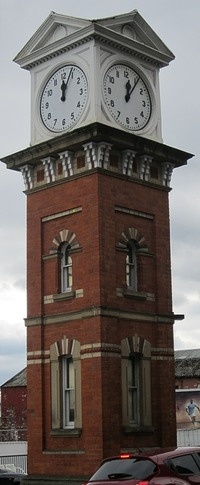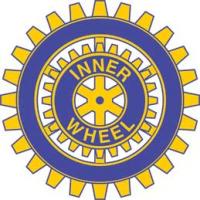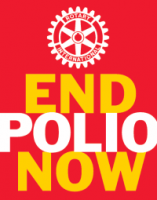Our Town
Altrincham is an historic and busy market town of some 40,000 people, eight miles southwest of the city centre of Manchester, a part of the Metropolitan Borough of Trafford, and includes the villages of Bowdon, Broadheath, Hale, Hale Barns, Dunham Massey

At the end of the first Millennium, it was a small Celtic settlement sited on a prominent hill on the old Roman oad connecting Mamucium (Manchester) with Deva (Chester). The Altrincham History Society (whose information and permission we acknowledge for use of the Market Place and Clock Tower photographs shown below) advises us that: “The name ‘Altrincham’ is Old English, meaning ‘the homestead of Aldhere’s people’; from ‘inga’ a group of people and ‘ham’ a homestead, village or estate. It has been spelled about 15 different ways since AD1290, including ‘Aldheringaham’ and most recently ‘Altringham’. The ‘ingaham’ structure is rare and indicates seventh century Saxon origin for the name. The name of the town was pronounced Awtrigem or Awtringeam in the nineteenth century and currently the ‘c’ in Altrincham is pronounced as a ‘g’ and outsiders often spell it as such. It was spelled Altringham up to about 1800 at which time the ‘c’ spelling began to be adopted, with both spellings in use until the 1930s.”
With the hostile Norman invasion in 1066 significant changes took place throughout the land. In the Northwest, for his success in capturing the city of Chester, the commander of the Norman army, Hugh d’Avranches, was given the Earldom of Chester, and he in turn rewarded one of his officers, Hamon de Massey, with the Barony of Dunham, including Bowdon (Bogedone), in 1070. Baron de Massey built himself a baronial hall in the existing deer park. Dunham Massey Hall and the surrounding parkland are attractive features of the borough to this day, providing a quiet retreat from the bustle of everyday life. The Dunham Estate, in a generous bequest, passed into the hands of The National Trust in 1976 upon the death of the then incumbent, the 10th Earl of Stamford. An 1828 Commercial Directory of Cheshire described Dunham Massey thus: "The parks which abound with fine lofty timber, give pasturage to more than 500 head of deer. The grounds are much frequented by parties from Manchester and its neighbourhood: joyous groups may be seen, on a summer's day, solacing themselves upon the verdant sward, beneath the umbrageous foliage, or rambling amidst the coll recesses of this truly sylvan scenery."
In 1290 Edward I granted a Royal Charter to the 5th Baron Hamon de Massey, and he in turn granted a Charter to the town of Altrincham, affixing his seal of a silver lion to the document witnessed by local knights, thus establishing it as a borough with a market, and subsequently a “Court Leet” to maintain law and order amongst several other duties that included the “chimney looker” to guard against fire, and the “ale taster” to preserve good quality. The 6th Baron de Massey died in 1342 without heirs, so ending that dynasty. The estate then belonged to a number of owners through sale, and marriage, culminating in the Grey family in 1756 when heiress Mary Booth married Harry Grey, the 4th Earl of Stamford.
In 1990 the town celebrated its 700th Charter anniversary, and since then the de Massey lion can be seen, not only above the main entrance to the Town Hall, but also embedded in the block paving laid in 1990 near the market as part of the celebrations (at the intersection of Shaws Road and Cross Street) together with the words “700 years, 1290 – 1990” set out in pavement blocks.
The Industrial Revolution, which began in 1733, brought considerable change to the country in general and to the businesses and population of Altrincham in particular, mainly as a result of the construction and use of the local section of the Bridgewater Canal that opened in 1779. Francis Egerton, 3rd Duke of Bridgewater, built the local section to link the Stretford end of the 1763 Worsley to Manchester canal with Runcorn.
The industrial estate that then evolved in the Broadheath area of the town was the first in the country, and fostered a variety of engineering and manufacturing businesses, mainly centred on yarn and garment manufacturing machinery.Nonetheless, agriculture and the importance to the community of the town’s market remained dominant. The 1828 Directory referred to earlier describes the town thus: “The town is about a mile in length, at the extremity of which passes the Duke of Bridgewater's canal, where is also the Navigation Inn and Packet House where passengers receive every accommodation while waiting for the packets. Here are some manufactures of thread, woolen yarn, bobbin turning, and a power loom factory; but agriculture is the chief employment of the labouring class here, the produce of the gardens, etc. assisting to suply the Manchester markets. The situation of he town is dry and healthy, the views, upon the high grounds of Bowdon, extensive and pleasing, and teh soil remarkably productive."
| The Altrincham Coat of Arms (shown opposite) which is incorporated on the splendid chain of office of the now defunct civic role of Mayor of Altrincham, signifies its place within the County of Cheshire (the wheat sheaves), its contribution to engineering industry (the cogwheel), and its historical heritage (the silver lion of de Massey on the shield). The unicorn is from the heraldry of the Earl of Stamford (the Grey family)whilst the lion represents the ancient Barons of Dunham Massey. The chain is mounted on forty-eight linked Maltese Cross shapes. The motto, “Altrincham en Avant” (Altrincham leads the way), granted on Aug 30, 1937, is a clear reference to its formative role in fostering industrialisation within an agricultural context. In the 20th century, railway modernisation began in Altrincham with the first electrification (see below). |
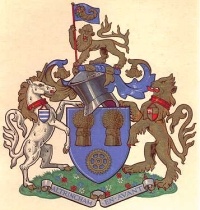
|
Also, the computer revolution which began with the development of the world’s first stored program computer at Manchester University by a team led by Tom Kilburn and Frank Williams, had an Altrincham connection. Alan Turing, famous for his Enigma code breaking efforts at Bletchley Park, joined the Manchester computer team in 1948, and was a resident of Hale for a short period before moving to Wilmslow.
The Altrincham mayoralty was established in 1937 when Altrincham became a Municipal Borough, and the first Mayor was Roger Grey, the 10th Earl of Stamford. In accordance with the Local Government Act of 1972, Altrincham became a part of the Metropolitan Borough of Trafford in 1974 along with Partington, Sale, Stretford and Urmston. With that change in administration, the Altrincham Mayoralty transferred to Trafford. The new Mayor of Trafford, giving recognition to the heritage of the region, will on occasion choose to wear the Altrincham Mayoral chain. The Trafford Coat of Arms, granted by the heralds of the College of Arms in 1974, contains representations of the ten communities comprising Trafford and includes the de Massey lion and the cogwheel from Altrincham, local icons both of which therefore survive today.
The Rotary Club of Altrincham was founded in 1929, and its President’s Jewel of Office recognises the history of the town by incorporating the shield bearing the de Massey lion in its design - there is no connection though between the cogwheel from the town’s Coat of Arms and the Rotary wheel.
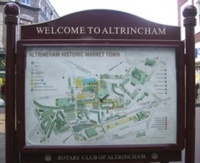
|
The Club used to meet in the Unicorn Hotel, as was, in the Old Market Place situated on the main road, Church Street, at that point. The building used as Town Hall Offices once adjoined the Unicorn Hotel until, in 1900, they were transferred to new premises on Market Street, opposite the market hall. The listed half-timbered building in the “Cheshire Magpie” style, Bank House, built in 1877, used to be a Lloyds Bank premises. The area is surrounded by a number of historic buildings with medieval timbers, and today is where the local Chamber of Commerce may be found.
As part of the 1990 Charter celebrations, the market traders erected the replica cross, stocks and whipping post in the Old Market Place, commissioned by the Altrincham Civic Society, and the Market Hall was renovated. The lintel from the Police Lock-ups of 1838 in George Street, which were closed in 1866, was incorporated into the stocks’ seat. The Unicorn was then renamed The Old Market Tavern. The Rotary Club now meets in the Cresta Court Hotel just down the road from the tavern, and to mark the Centenary of Rotary International, founded in 1905 in Chicago, the Club donated a town map that was erected on George Street, the principal shopping area, in February 2005. The map and its housing have since been removed and are awaiting a new home in the proposed 'gateway' to Altrincham that will be built on land on the corner of Stamford Street and Stamford New Road. In 1849 the railway arrived in the town, this promoting greater movement of people and goods between Altrincham and neighbouring Manchester, and leading to an expansion in commercial and professional business in the town. Commuting had begun! Mill owners and businessmen migrated to Altrincham where they built large houses, much in evidence to this day, in the calmer rural setting as it was. This in turn improved the business and prosperity in the town. The original Altrincham Station was adjacent to where the level crossing used to be on the old Stockport Road, while at the other end of town, the Bowdon Station was located on Railway Street. What is today Hale Station used to be called Bowdon (Peel Causeway) Station when it was opened in 1862 by the Cheshire Midland Railway, then changed its name a few times until 1902 when it was named Hale Station. Both Altrincham and Bowdon railway stations were built in 1849, but replaced by the present station in 1881, and a prominent clock tower erected in the forecourt (shown opposite). This is the only remaining landmark from that original station setting, and is one of the most recognisable symbols of Altrincham today. The line to Manchester was electrified in 1931, the first in the world, this marking the beginning of the end for steam trains. The electric train service ceased on Christmas Eve, 1991, regrettably with no ceremony of any kind. |
Horse-drawn trams appeared in the Manchester area in the 1870’s and these served Altrincham and the surrounding towns and villages. Electric trams, first tried in Birkenhead, were established in Altrincham in 1907.
The journey to Manchester, from the terminus on The Downs, where it joins Ashley Road, took one hour, and “provided much of interest, especially the different shades of dialect spoken on the journey.” Buses replaced the tram service in 1931.
The trams returned in 1992 on June 15th, with the opening of the very modern Metrolink service to Manchester, and beyond to Bury, utilising the well used unique electrified line. In Manchester, the service runs along the streets, this being the first and then only street operated Light Rapid Transport System in the country. Another first! The journey into Manchester now takes 15 minutes.
In more recent years, the character of the town, as with the village of Hale, has changed markedly. What used to be a town of small shops of every kind, has become a home to large stores and where many of the more traditional shops have been sold and converted into attractive restaurants, bars and cafes, fostering a new “street café culture” in and around the town. Also, supermarkets in “out-of-town” architectural styles have been built in and on the perimeter of the town.
(200726)
'What We Do' Main Pages:
Did you know that Rotary is not just a type of engine or a brand of watch?
moreTo rid the world of polio has been an aim of Rotary for over 30 years.
moreEach year The Rotary Foundation provides scholarships and other awards in support of Rotary's mission to further international understanding and world peace.
more
Altrincham is an historic and busy market town of some 40,000 people, eight miles southwest of the city centre of Manchester, a part of the Metropolitan Borough of Trafford, and includes the villages of Bowdon, Broadheath, Hale, Hale Barns, Dunham Massey
more
The Probus Club of Altrincham normally meets on alternate Friday mornings at 10.30 am at Bowdon Parish Centre, Bowdon, Altrincham.
more